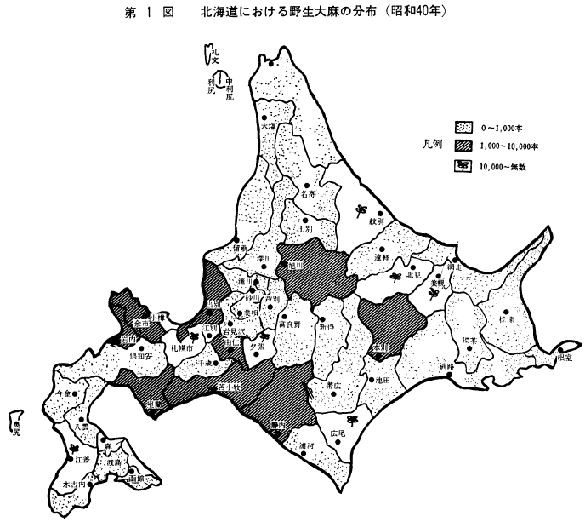Industrial hemp of Hokkaido -the challenge towards a future-
Wild hemp and genetic resources
Native hemp grown by farmers in Hokkaido have become wild after the Second World War. In order to prevent drug abuse, the authorities remove 0.5-1 million stumps of wild hemp in early July every year.
The wild hemp found in Hokkaido is a strain that grows like weeds every year and has been flowering and fruiting for 70 years independently without human cultivation. It is thought to be a variety that has survived and is very suitable for the Hokkaido climate. These are valuable genetic resources for breeding research.

In Hokkaido, we conduct wild hemp sampling activities every year since we conducted the investigation of wild hemp in 1965. It gradually declined with peaks of several 8.5 million pulled out in 1983, recently it is around 1 million.
Significance of genetic resources
Due to the development of modern agriculture, specific varieties with high yield, high taste and pests have spread. As a result, there are few native species that had been around since, and seed diversity has been lost. As the Convention on Biological Diversity Conservation was enacted in 1993, genetic resources are the subjects to be preserved in each country.
The fiber type called industrial hemp is mainly European. According to research, it is limited to only three strains, which is a major concern for future breeding.
Also, an industrial hemp varietial "tochigishiro" developed in
1983 in Tochigi prefecture was bred from wild hemp. Prof. Masayama at the
time of Kyushu University coincidentally discovered varieties of marijuana's
main ingredient THC 0%. The test site breeded its variety and the Tochigishi
No. 1 of the native species of Tochigi prefecture. In the world of "breeding",
wild hemp is a very precious existence.